Welcome, shrimp farming enthusiasts! Are you looking to optimize your shrimp farm operations and maximize your profits? Look no further! This comprehensive guide will explore the importance of month-wise maintenance in shrimp farming and how it can lead to better financial gains. Efficiently managing a shrimp farm involves a delicate balance of factors, from water quality and temperature control to feeding schedules and disease prevention.
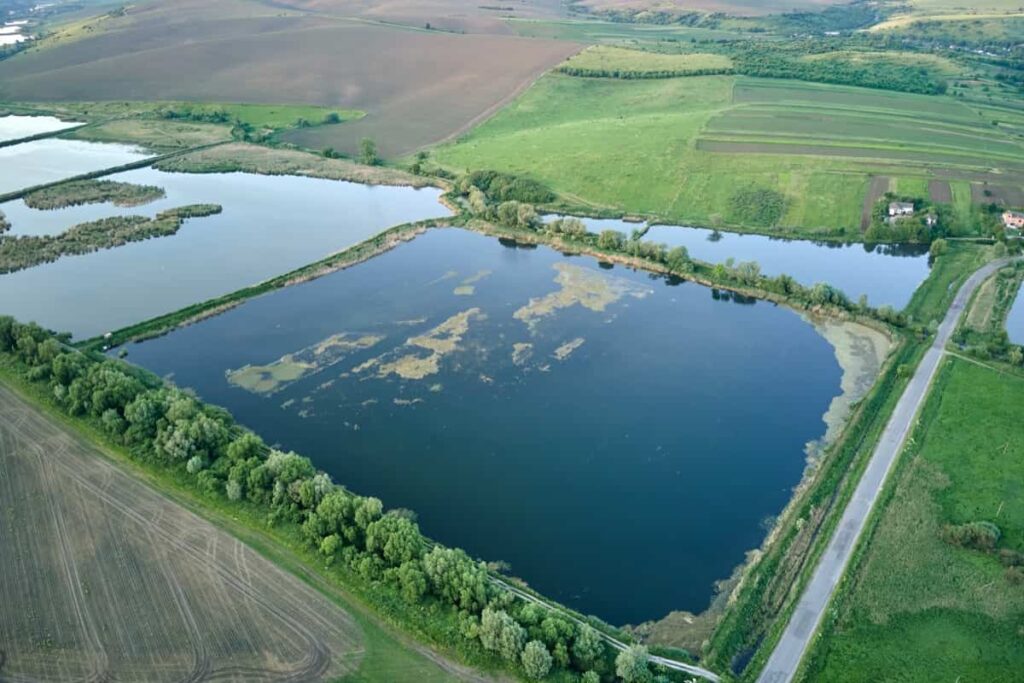
By implementing a systematic approach to maintenance tailored to each month’s unique requirements, you can boost productivity, minimize losses, and ensure the overall well-being of your shrimp. Join us as we delve into the intricacies of shrimp farm operations management with month-wise prawn/shrimp farm operations and uncover practical tips and techniques for optimizing your farm’s profitability month by month.
What is a Shrimp Farm?
A shrimp farm, or shrimp aquaculture, is the process of cultivating shrimp in controlled environments. This involves raising and nurturing shrimp species, like the Pacific white shrimp, in specifically designed ponds or tanks. Responsible shrimp farming practices prioritize sustainable production, maintaining water quality, preventing diseases, and minimizing ecological impact. Shrimp farms play a crucial role in meeting the worldwide demand for shrimp, providing a sustainable and reliable source of this popular seafood.
What is Shrimp Farm Operations Management?
Shrimp Farm Operations Management refers to the strategic and systematic approach to managing various aspects of shrimp farming to ensure optimal productivity, profitability, and sustainability. It involves planning, organizing, and implementing activities related to water quality management, feed management, disease prevention and treatment, stock management, harvesting, and marketing.
Effective operations management in shrimp farming focuses on optimizing production parameters, ensuring proper pond and equipment maintenance, implementing efficient feeding protocols, and monitoring environmental conditions.
How to Start a Shrimp Farm Tips for Better Profits
Species selection: Choose shrimp species that align with your farming goals, market demand, and environmental conditions. Consider factors such as taste, size, disease resistance, and market value. Popular species in the U.S. include Marine Shrimp, Giant Tiger Prawns, Freshwater Prawns, Blue Shrimp, and Brown Shrimp, among others.
Production methods: Explore different production methods such as pond culture, raceway systems, biofloc technology, recirculating aquaculture systems, or integrated multi-trophic aquaculture. Each method has advantages and considerations, affecting factors like production scale, water management, and environmental sustainability.
Farm location: Select a suitable location with clean and well-oxygenated water, market access, appropriate land availability, and essential infrastructure like electricity and freshwater sources. Consider climate conditions to ensure optimal growth and disease prevention.
In case you missed it: Common Shrimp/Prawn Diseases, Symptoms, Treatment: Check How this Guide Helps Shrimp Farmers
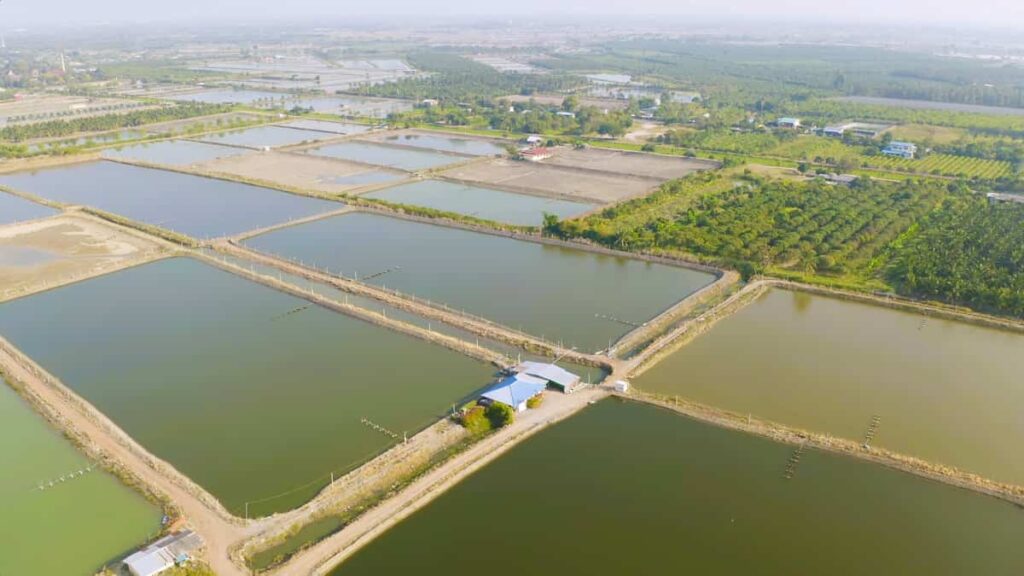
Essential equipment: Equip your shrimp farm with the necessary tools and machinery. Essential equipment includes aeration systems for oxygenation, water pumps for circulation, specialized nets for handling shrimp, water testing kits for monitoring water parameters, feeding equipment for precise and efficient feeding, grading tools for size uniformity, water filtration systems, and tanks or ponds for shrimp habitat.
Disease prevention: Implement preventive measures to protect your shrimp from diseases. Utilize disinfection products, probiotics, and medications as needed. Regularly monitor water quality parameters, maintain hygiene, and follow best management practices to ensure healthier stocks.
Business planning: Develop a comprehensive business plan that outlines your objectives, target market, financial projections, and marketing strategies. Assess market demand and feasibility to establish a strong foundation for your shrimp farming business.
Stock selection: Source healthy shrimp postlarvae from reputable hatcheries. Ensure proper transportation, acclimation, and quarantine procedures to prevent diseases and maintain the quality of your shrimp stock.
Feeding and management: Establish a well-balanced feeding schedule and closely monitor water quality parameters. Implement effective management protocols to optimize growth, minimize stress, and prevent diseases. Regularly assess the health and behavior of your shrimp to ensure their well-being.
Harvest and marketing: Plan and systematically harvest when shrimp reach the desired marketable size. Develop marketing strategies to promote your sustainably farmed shrimp and secure profitable sales channels. Consider local markets, restaurants, seafood distributors, and direct-to-consumer options.
Facilities & Components Required for Shrimp Farm Management
Maturation tanks: Eyestalk ablation techniques can be used to augment the limited supply of spawners from the wild in tiger shrimp hatcheries. Maturation tanks, whether circular, rectangular, or oval in shape, ensure a constant supply of gravid females. Tank capacity ranges from 5 to 40 tons with depths of 1.2 to 2 meters. The bottom substrate is not necessary for shrimps kept for less than five weeks. Continuous flow-through of seawater is facilitated through an inlet pipe and a double-cylinder standpipe for drainage.
Spawning tanks: Circular tanks with a flat or conical-shaped bottom are suitable for temporarily holding gravid females until spawning. Water holding capacity ranges from 50 liters to 1.5 tons. Tanks can be made of fiberglass, Plexiglass, plastic, or marine plywood.
Larval rearing tanks: Two rearing tanks are used: Small-Tank Hatchery System and Large-Tank Hatchery System. In Japan and Taiwan, larger tanks with more than 50 tons capacity are used, while in Southeast Asia, smaller larval rearing tanks of about 3 tons capacity are common. Tank shapes vary (circular, rectangular, or oval) with different capacities. Larvae are reared for 35-40 days in the Big Tank System.
In case you missed it: Month-Wise Poultry Farm Operations Maintenance and Management For Better Profits
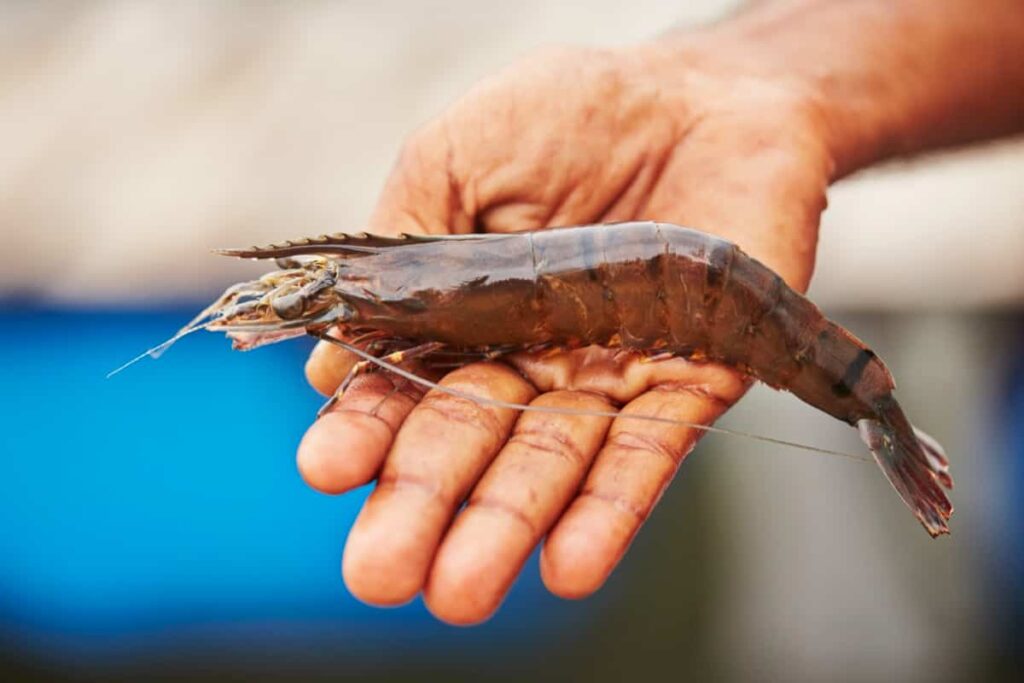
Live food culture tanks: Tanks used for mass cultivation of live food organisms range from 1 to 20 tons in size. Tanks can be made of fiberglass, polyethylene, marine plywood, or concrete. The total tank capacity for live food culture is about 20% of the total tank capacity for larval rearing.
Water storage and filtration tanks: Water storage tanks should have a capacity of at least 20% of the larval rearing tanks. Tanks are typically made of reinforced concrete. Filtration systems, such as gravity or reversing filters, are necessary when the water is turbid. Filter materials can include white sand, charcoal, or gravel.
Aeration: Aeration is essential for maintaining sufficient dissolved oxygen concentration, even water temperature, and reducing ammonia content in the water. A roots blower, rotary blower, or air compressor can be used. Continuous aeration is crucial for larval survival, and an automatic switch with a standby generator is recommended.
Marine pumps: Centrifugal and submersible pumps are commonly used. The choice of the pump depends on the hatchery size and water requirements. Submersible pumps are suitable for small or backyard hatcheries, while centrifugal pumps are used for medium and large hatcheries.
Layout and construction: Important facilities include buildings, tanks, a pump house, a laboratory, and a staff house.
Requirements for Shrimp Pond Construction
Criteria of Selection of Site
- Accessibility: The site should be easily reachable via a road or path.
- Protection from floods and seepage: The site should be free from flood-prone areas and seepage issues.
- Water supply: Adequate arrangements for a reliable system should be in place.
- Water outlet: Proper provision for a water outlet should be made to maintain the desired water level in the pond.
Soil Permissible Parameters
- Texture: The soil should have a composition of 40% sand, 20% silt, and 40% clay.
- Color: The soil color should be blackish brown.
- Moisture: The soil should have a moisture content of 35-40%.
- Water retention capacity: The soil should retain at least 40% water.
- Alkalinity, Hardness, Phosphate: The soil should have specific levels within the ranges mentioned.
Water Permissible Parameters
- Temperature: The water temperature should be between 28-30 degrees Celsius.
- Dissolved oxygen: The water should contain 5-10 mg/liter of dissolved oxygen.
- Visibility: The water should have a visibility range of 35-40 cm.
- pH: The pH level of the water should be between 7.0 and 8.5.
- Alkalinity, Hardness, Conductivity, Salinity: The water parameters should fall within the specified ranges.
- BOD, COD, Phytoplankton, Zooplankton: The water should meet the mentioned limits for these parameters.
In case you missed it: The Ultimate Guide to Sheep Vaccination Schedule: Deworming Chart/Calendar

Time Scheduling for Prawn/Shrimp Culture in Pond
| Construction of Pond & Infrastructure | 45 days |
| Nursery pond preparation & Stocking | 15 days |
| Stocking of Seed in Grow out of Pond | 45 days |
| Trial Netting | After 60 days of Stocking of seed |
| Soil & water analysis | Quarterly |
| Water exchange | Monthly after 60 days of Stocking |
| Partial Harvesting | After 150 days of Stocking |
| Total Harvesting | After 220-245 days of Stocking |
General Operation, Activities, and Management of Shrimp Farm
- Routine Shrimp Farm management is important for cultured organisms’ successful growth and survival. Optimal environmental conditions must be maintained, including water quality parameters such as salinity, temperature, dissolved oxygen, pH, and nitrogenous compounds.
- Salinity levels should be kept between 30 and 32 ppt in spawning tanks to ensure good hatching rates. Temperature affects metabolic processes, with the optimum range for larvae growth and molting being 26-31°C.
- Dissolved oxygen is critical, and aeration should be provided continuously to prevent high mortalities. pH levels should be maintained between 7.5 and 8.5 to avoid toxic ammonia. Regular monitoring of environmental parameters is necessary.
- Feeding schemes are essential for shrimp larvae, particularly in the early stages when they cannot efficiently seek food. Diatoms can overgrow in rearing tanks, leading to mortality due to attachment to larvae appendages and water fouling.
- Maintaining diatom density within specific ranges and adding new diatom cultures when needed helps ensure sufficient food levels.
- Other food sources such as Brachionus and Artemia should also be provided. Feeding densities and strategies vary depending on the larval stage and species.
- Postlarvae are nursed in concrete tanks, earthen ponds, or net cages in the nursery phase. Concrete tanks require aeration, diatom cultures, and proper substrate for larvae attachment. Artemia and other food sources are provided, and water changes are conducted daily.
- Predator control measures, fertilization, and feeding with chopped mussel or cockle meat are implemented in earthen ponds. Nursery cages, floating or stationary, are supported by frames and stocked with postlarvae. Feeding and water quality management are similar to earthen ponds.
Month-wise Prawn/Shrimp Farm Operations
January Month Maintenance Operations in Shrimp Farm
- Pond preparation: Drain and dry ponds, remove sediment, and repair infrastructure.
- Water quality management: Monitor and adjust pH, salinity, and dissolved oxygen levels.
- Stocking: Introduce postlarvae at a density of X per square meter.
- Feeding: Provide appropriate feed according to postlarvae size and stage.
- Disease prevention: Implement biosecurity measures and monitor for any signs of disease.
- Pond maintenance: Regularly clean and maintain pond infrastructure and equipment.
In case you missed it: Sheep Farm Operations Management: Month-Wise Maintenance For Better Profits
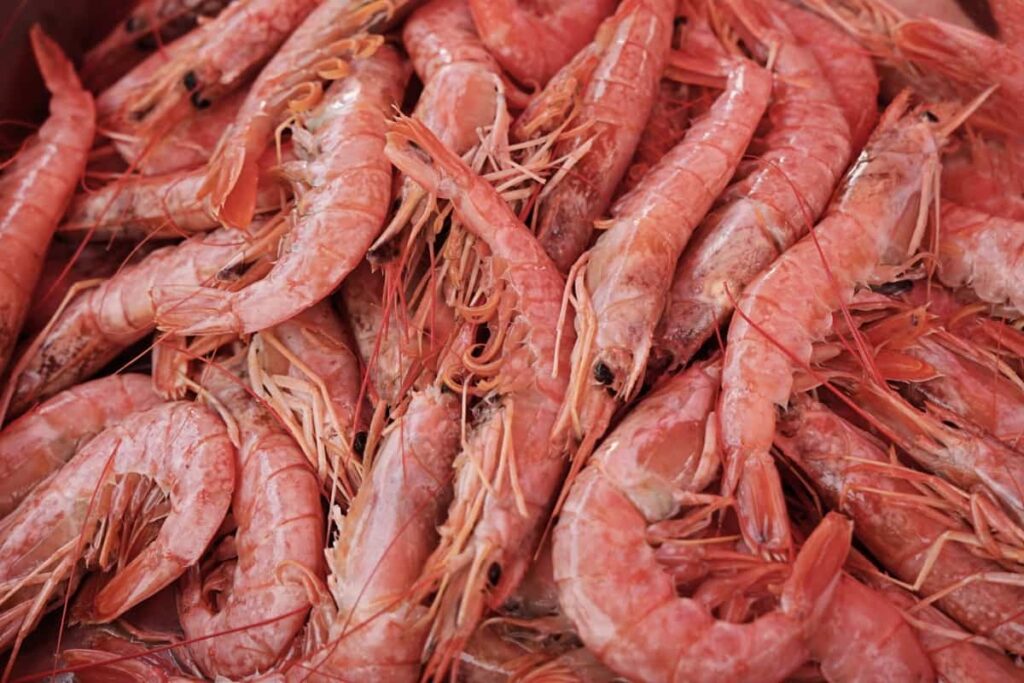
February Month Maintenance Operations in Shrimp Farm
- Water quality management: Monitor temperature, salinity, and dissolved oxygen levels.
- Feeding: Adjust feeding rates based on postlarvae growth and nutritional needs.
- Pond maintenance: Clear any excess vegetation and repair or replace damaged infrastructure.
- Disease monitoring: Conduct regular health checks and observe for any abnormalities.
- Harvest planning: Evaluate the growth and development of shrimp for potential harvest in the coming months.
March Month Maintenance Operations in Shrimp Farm
- Water quality management: Monitor and maintain optimal water parameters.
- Feeding: Provide balanced and nutritious feed to support shrimp growth.
- Disease prevention: Implement preventive measures, such as regular pond disinfection.
- Pond maintenance: Clean and maintain infrastructure, and check for leaks or damages.
- Monitoring and record-keeping: Track growth, survival rates, and health issues.
April Month Maintenance Operations in Shrimp Farm
- Water quality management: Monitor and adjust parameters as needed.
- Feeding: Evaluate feed conversion rates and adjust feeding practices accordingly.
- Harvesting: Begin harvesting market-sized shrimp, considering market demand.
- Pond maintenance: Inspect and repair infrastructure, and ensure proper water circulation.
- Disease management: Monitor and address any disease outbreaks promptly.
May Month Maintenance Operations in Shrimp Farm
- Water quality management: Maintain optimal conditions for shrimp growth.
- Feeding: Monitor feed consumption and adjust feeding rates if necessary.
- Harvesting: Continue harvesting mature shrimp and plan for restocking.
- Pond maintenance: Clean and repair infrastructure and prepare for potential weather changes.
- Data analysis: Analyze production data to assess performance and make informed decisions.
June Month Maintenance Operations in Shrimp Farm
- Water quality management: Monitor and adjust water parameters to prevent stress.
- Feeding: Optimize feed formulation and feeding strategies.
- Stocking: Introduce new postlarvae to maintain the production cycle.
- Pond maintenance: Manage vegetation growth, repair, or replace equipment as needed.
- Marketing: Evaluate market trends and plan for shrimp sales.
July Month Maintenance Operations in Shrimp Farm
- Water quality management: Ensure proper aeration and maintain water parameters.
- Feeding: Adjust feeding practices based on shrimp size and nutritional requirements.
- Disease prevention: Implement disease management protocols, such as regular pond disinfection.
- Pond maintenance: Clean and maintain infrastructure and address any potential issues.
- Financial analysis: Assess production costs and profitability.
August Month Maintenance Operations in Shrimp Farm
- Water quality management: Monitor and maintain optimal water conditions.
- Feeding: Fine-tune feeds formulation and feeding practices.
- Harvesting: Continue harvesting market-sized shrimp, considering market demand.
- Pond maintenance: Inspect and repair infrastructure, and optimize water circulation.
- Sustainability practices: Implement environmentally friendly techniques and minimize waste.
In case you missed it: Lobster Farming Business Plan: Cultivation Practices, Breeding to Harvesting
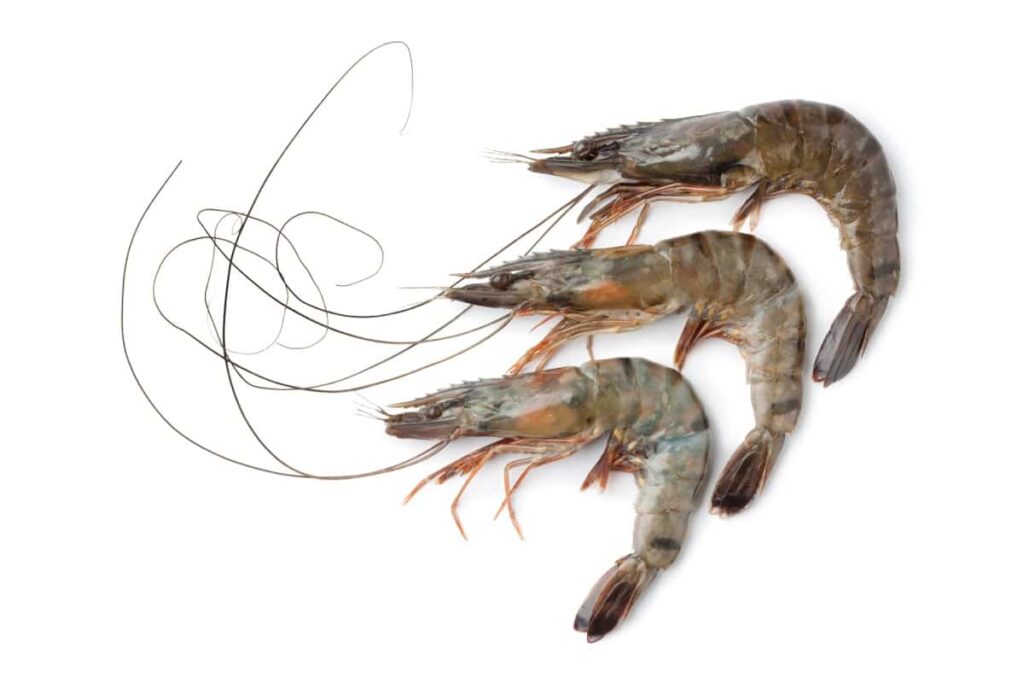
September Month Maintenance Operations in Shrimp Farm
- Water quality management: Monitor water parameters closely to support shrimp health.
- Feeding: Evaluate feed conversion rates and adjust feed composition if necessary.
- Stocking: Assess postlarvae availability and introduce new shrimp to maintain the production cycle.
- Pond maintenance: Conduct thorough cleaning, repair infrastructure, and prepare for cooler weather.
- Risk assessment: Evaluate potential risks and develop contingency plans.
October Month Maintenance Operations in Shrimp Farm
- Water quality management: Ensure stable water conditions for shrimp growth.
- Feeding: Adjust feeding rates and frequencies based on shrimp appetite and growth.
- Harvesting: Continue harvesting mature shrimp and evaluate market demands.
- Pond maintenance: Monitor and address any infrastructure, drainage, or water quality issues.
- Research and innovation: Explore new technologies and practices to improve production efficiency.
November Month Maintenance Operations in Shrimp Farm
- Water quality management: Monitor and maintain optimal water parameters.
- Feeding: Fine-tune feeding practices to support shrimp growth and health.
- Disease prevention: Implement biosecurity measures and monitor for any signs of disease.
- Pond maintenance: Clean and maintain infrastructure, and prepare for potential weather changes.
- Market analysis: Assess market trends and adjust production plans accordingly.
December Month Maintenance Operations in Shrimp Farm
- Water quality management: Monitor and adjust water parameters to prevent stress.
- Feeding: Optimize feed formulation and adjust feeding rates based on shrimp growth stage.
- Harvesting: Finalize harvesting of market-sized shrimp and prepare for a new production cycle.
- Pond maintenance: Conduct thorough cleaning, repair infrastructure, and plan for winter conditions.
- Evaluation and planning: Reflect on the year’s production, analyze data, and develop strategies for the upcoming year.
Conclusion
Implementing month-wise maintenance activities in shrimp farm operations management is crucial for maximizing profits. By consistently monitoring water quality, optimizing feeding practices, maintaining infrastructure, and addressing disease prevention, farmers can ensure optimal growth and health of shrimp, leading to improved financial outcomes.
- Crops Grown in Summer Season: Best Choices for Summer Gardening
- Organic Pest Control for Tomato Farming
- How to Maximize Sheep Farming Profit
- Broccoli Varieties: Choosing the Right Cultivars for Your Farm
- How to Raise Pigs in Your Own Backyard: A Comprehensive Guide
- Budget Friendly Sheep Shed Ideas: Cheap and Low-Cost Tips
- How Much Do Cattle Farmers Make: Revenue Streams in Cattle Farming
- Management Pests and Diseases in Your Cotton Field
- Sheep Farming Business Plan for Beginners
- Aquaponic Farming at Home: A Step-By-Step Guide
- Profitable Village Farming Business Ideas in 2024
- High-Yield Aquaculture: Fast-Growing Fish for Farming
- Effective Fish Pond Construction Techniques for Beginners
- Irrigation and Water Management in Pineapple Farming
- Blossom to Harvest: Mastering Flowering and Pollination in Papaya Farming
- Pig Fattening Essentials: From Selection to Sale for Beginners
- Raising Wagyu Cattle: A Complete Guide for Premium Beef Production
- Soil Types and Their Water Holding Capacity
- Optimizing Irrigation Schedules for Coconut Groves for Enhanced Yield
- Espresso Your Garden: Coffee Grounds for Healthier Acid-Loving Plants
- The Best Soil Mix for Snake Plants: How to Mix Your Own Snake Plant Soil
- Green Thumb Success: Expert Tips for Cultivating Greenhouse Beans All Year Round
- Bloom All Year Round: The Ultimate Guide to Indoor Hyacinth Care
- Eco-Friendly Gardening: How to Make Liquid Fertilizer from Kitchen Waste
- Ultimate Guide to Grow Anise in Pots: Explore Seed Propagation to Harvesting
- Guide to Raising Chester White Pigs: Discover Breed Facts to Growth Management
- Mastering the Elegance: The Ultimate Guide to Weeping Cherry Tree Care, Planting, and Maintenance
- Ultimate Guide to Planting Garlic in Grow Bags: Growing Strategies for Beginners
- How to Fix Spider Plant Leaf-Related Problems: Natural and Organic Remedies
- 10 Reasons Why Your Tulsi Plant is Shedding Leaves: Home Remedies and Solutions
- Optimizing Growth and Yield: The Advantages of Palm Bunch Ash Fertilizer
- Utilizing Neem Oil Extract as a Natural Pesticide for Hydrangea
- From Soil to Harvest: Various Ways in Which Farmers Can Use AI Tools
- Steps to Encourage and Induce Citrus Flowers: A Comprehensive Guide
- How to Fix Snake Plant Leaf-Related Issues: Natural and Organic Remedies
- Transform Your Garden into a Fragrant Oasis with Raat Ki Rani (Night Blooming Jasmine)
